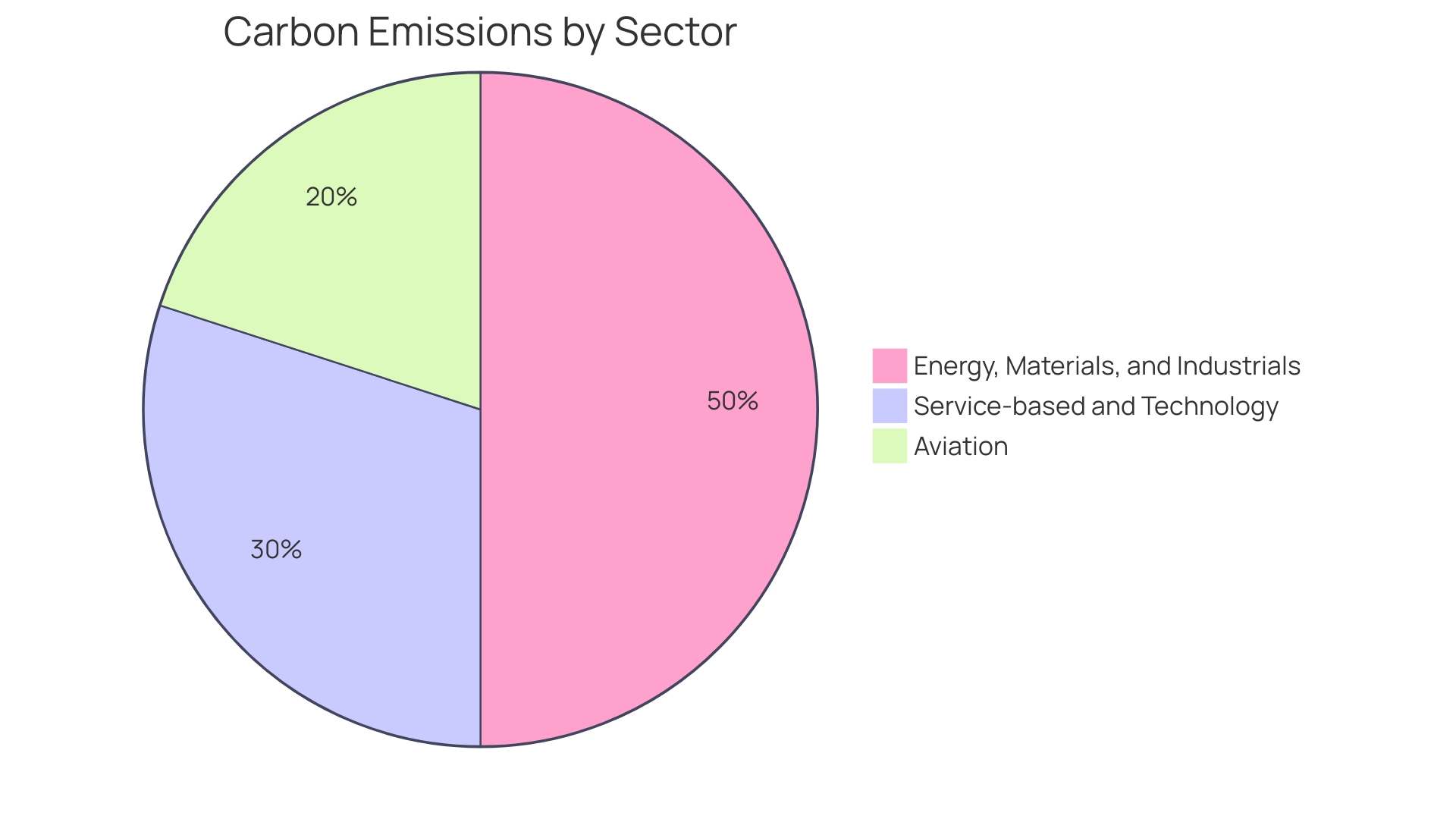Introduction
The composition of jet fuel exhaust is a complex blend of gases and particles that have significant environmental implications. Carbon dioxide and water vapor, as well as nitrogen oxides, sulfur oxides, carbon monoxide, unburned hydrocarbons, and particulate matter, are all emitted during the combustion process. As the aviation industry continues to grow, there is a growing push towards adopting sustainable aviation fuel (SAF) to mitigate the environmental impact of flying.
SAF, a renewable alternative, has the potential to seamlessly integrate with current engine designs and fuel infrastructure. However, transitioning to SAF presents challenges, as the industry must ensure its reliability and efficiency while reducing aviation's carbon footprint. The urgency for this transition is heightened by the broader climate challenges the world faces, with aviation's contribution to global warming and the formation of contrail-cirrus clouds being critical concerns.
As the industry navigates this transformation, maintaining high safety standards remains a top priority. This article explores the environmental impacts of jet fuel exhaust, the contributions of the aviation sector to climate change, and the local air quality impacts associated with jet fuel combustion. It also delves into the challenges and advancements in sustainable aviation fuel and the need for comprehensive efforts to address air pollution.
Composition of Jet Fuel Exhaust
Jet engine emissions are not merely a byproduct of air travel but a blend of various gases and particles that have an impact on the environment. These emissions include carbon dioxide and water vapor, which are common to the combustion process, as well as nitrogen oxides, sulfur oxides, carbon monoxide, unburned hydrocarbons, and particulate matter, which can vary with the type of engine and fuel. With the aviation industry's steady growth, there is a push towards adopting sustainable aviation fuel (SAF) to reduce the environmental footprint of flying.
SAF is a renewable, energy-dense alternative that is gaining attention due to its potential to integrate seamlessly with current engine designs and fuel infrastructure. Robert McCormick of the National Renewable Energy Laboratory highlights that transitioning to SAF is a novel concept for an industry accustomed to a specific fuel type for over 70 years, indicating a significant shift towards sustainability. This shift is not without its challenges, as the industry must ensure that SAF is as reliable and efficient as traditional jet fuel while contributing to a reduction in aviation's carbon footprint.
The urgency for such a transition is underscored by the broader climate challenges the world faces, with aviation's contribution to global warming through CO2 emissions and contrail-cirrus clouds that trap radiation being a critical concern. As the industry navigates this transformation, the focus remains on maintaining the high safety standards that make commercial aviation one of the safest modes of transport today.

Environmental Impacts of Jet Fuel Exhaust
As the global aviation industry continues to evolve, the environmental consequences of jet fuel combustion are becoming increasingly apparent. Aircraft emissions are a known contributor to greenhouse gas accumulation, with carbon dioxide and water vapor playing significant roles in the acceleration of global warming. Moreover, the release of nitrogen oxides (NOx) and sulfur oxides (Sox) during flight contributes to atmospheric pollution, leading to smog formation and acid rain, which poses risks to local air quality and ecosystems.
The industry's carbon footprint is substantial, with nearly 2.5 percent of today's carbon emissions resulting from air travel. This figure is expected to climb as aviation's share of global emissions increases, particularly as other sectors progress more rapidly in their decarbonization efforts. Despite advancements in alternative power sources for aircraft, such as batteries and hydrogen, the reliance on liquid fuels for the current and foreseeable future fleet remains a challenge.
In response to these environmental concerns, significant strides are being made in the development and implementation of sustainable aviation fuel (SAF). SAF, which includes biofuels, can potentially reduce the carbon intensity of aviation fuel by over 80 percent while being fully compatible with existing jet engines. However, Saf's market share is less than 0.1 percent, hindered by limited supply, fragmented demand, and cost barriers.
The landmark transatlantic flight by Virgin Atlantic, powered solely by alternative fuels, exemplifies the potential for greener aviation. Although this flight was a one-off event and did not carry fare-paying passengers, it was a proof of concept that a more sustainable flying method is feasible. Yet, the aviation industry must surmount the challenge of scaling up SAF production to meet demand, as well as addressing the non-CO2 impacts of aviation, such as contrail cirrus formations that contribute significantly to warming.
Innovations in aviation fuel, similar to past modifications in gasoline and diesel chemistry, are not only possible but are actively being pursued through both public and private investments. As the industry historically centered on safety, with a rich tradition of fuel consistency since the 1950s, the embrace of SAF marks a pivotal moment. This transition is fueled by a growing recognition of the importance of mitigating the environmental impacts associated with flying, ensuring a more sustainable future for commercial aviation.
Climate Change Contributions
The aviation sector's environmental footprint extends beyond CO2 emissions. While carbon dioxide is indeed a significant driver of global warming, the combustion of jet fuel also introduces water vapor into the atmosphere, adding to the greenhouse effect. The complexity of the climate impact of aviation is underscored by the international community's struggle to implement effective climate action, as highlighted at COP 27.
Despite a deepened understanding of climate change, an action gap persists, necessitating innovative approaches to achieve net zero emissions—a state where greenhouse gas (GHG) additions and removals from the atmosphere are balanced.
One pioneering example was Virgin Atlantic's trans-Atlantic flight using a Boeing 787 powered by Sustainable Aviation Fuel (SAF) derived from tallow and waste fat. This milestone event, supported by the UK Transport Department with £1 million funding, showcased the potential for reducing aviation's carbon footprint and moving towards 'jet zero'. SAF is recognized as an essential component for the sector's transition, being both energy-dense and renewable, while maintaining compatibility with existing jet engines.
The push for SAF is part of a broader research agenda focusing on Technology Readiness Levels (TRL) 1-4, aimed at understanding and mitigating aviation's non-CO2 impacts. This includes exploring fossil fuel, SAF, and zero-carbon emission aircraft within the realm of civil aviation. As per industry insights, public and private sectors are ramping up investments to scale up SAF production and use.
However, significant challenges in cost and availability must be overcome to expand its adoption.
Statistical insights suggest a shift in research priorities, emphasizing the improvement of our understanding of non-CO2 impacts. Researchers are encouraged to explore multiple strands of this theme, with an emphasis on industrial partnerships. The transformation of the aviation industry towards sustainability is indeed a complex and multifaceted challenge, requiring a concerted effort across technological innovation, policy, and market readiness.

Local Air Quality Impacts
The combustion of jet fuel in aircraft engines generates emissions that significantly impact local air quality and public health, particularly around airports and in heavy air traffic zones. Exhaust from jet engines contains nitrogen oxides (NOx) and sulfur oxides (Sox), which under the influence of sunlight and in the presence of other atmospheric pollutants, form ground-level ozone and particulate matter. The health implications of these pollutants are far-reaching and multifaceted.
Ground-level ozone and fine particulate matter (PM2.5) are known to exacerbate respiratory conditions, cardiovascular diseases, and other health issues. In particular, a study in California linked PM2.5 pollution to over 9,200 deaths annually, highlighting the gravity of air pollution on human health.
Moreover, recent research underscores the systemic impact of air pollutants, which can lead to inflammation, oxidative stress, and damage not only to the respiratory system but nearly every organ in the body, including the heart and brain. The increased medical spending associated with the rise in health disorders due to air pollution, as evidenced by a trial assessing the effects of altered flight paths on residents' health, further establishes the causal link between aviation emissions and public health concerns.
In light of climate change, the challenge of mitigating air pollution is becoming more pressing. Studies predict a steady increase in harmful pollutants like PM2.5 and tropospheric ozone due to climate change-related events, such as wildfires, which are expected to become more frequent and severe. The Western United States is projected to be particularly affected by an uptick in PM2.5 emissions, exacerbating the already significant health risks.
Internationally, countries like China have shown that improving air quality can have a direct positive impact on life expectancy. Conversely, regions like South Asia continue to bear a disproportionate burden of air pollution, with India alone accounting for a substantial share of the increase in global particulate pollution levels. Addressing air pollution requires comprehensive and collaborative efforts that involve stringent regulations, better air quality monitoring, and effective measures to protect at-risk populations.
Conclusion
The aviation industry is actively transitioning to sustainable aviation fuel (SAF) to reduce the environmental impact of jet fuel exhaust. SAF, a renewable alternative, can integrate seamlessly with current engine designs and fuel infrastructure. However, challenges remain in ensuring SAF's reliability and efficiency while reducing carbon emissions.
Aviation's contribution to global warming and the formation of contrail-cirrus clouds are pressing concerns. Safety standards remain a top priority during this transformation. Jet fuel exhaust emits various gases and particles, including carbon dioxide, water vapor, nitrogen oxides, sulfur oxides, carbon monoxide, unburned hydrocarbons, and particulate matter.
Alternative power sources for aircraft are still in development.
SAF development and implementation have made significant progress. It has the potential to reduce aviation fuel's carbon intensity by over 80% while being compatible with existing engines. However, limited supply, fragmented demand, and cost barriers hinder its market share.
Scaling up SAF production and addressing non-CO2 impacts like contrail cirrus formations are crucial for a greener aviation industry.
Jet fuel combustion significantly impacts local air quality and public health, forming ground-level ozone and particulate matter. These pollutants worsen respiratory conditions and other health issues. Addressing air pollution requires comprehensive efforts, including strict regulations, improved monitoring, and protective measures for vulnerable populations.
In conclusion, the aviation industry's transition to sustainable aviation fuel is essential to minimize environmental impact. SAF offers a renewable solution that can integrate with existing infrastructure. Collaborative efforts among industry, policymakers, and researchers are necessary to overcome challenges and ensure a sustainable future for commercial aviation.




